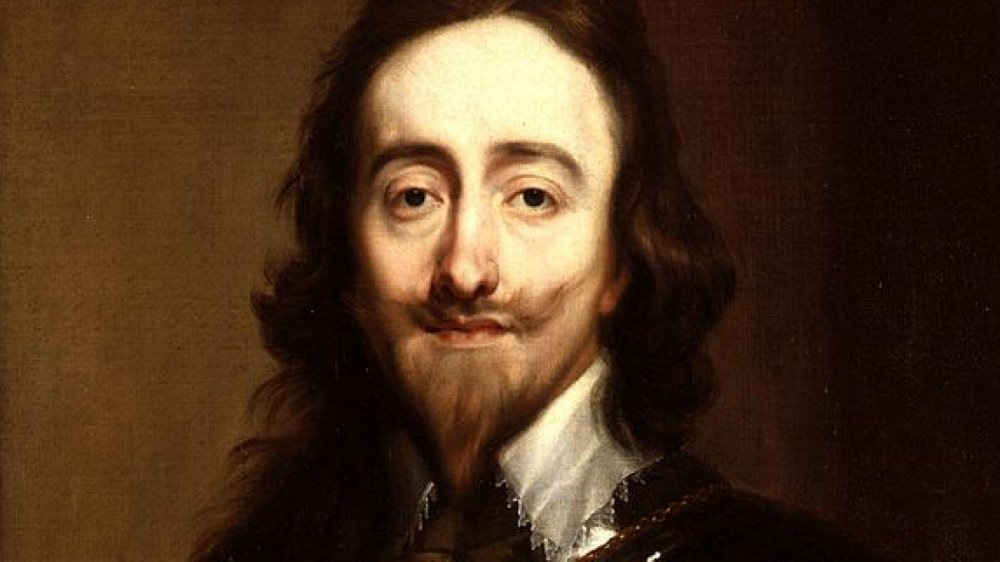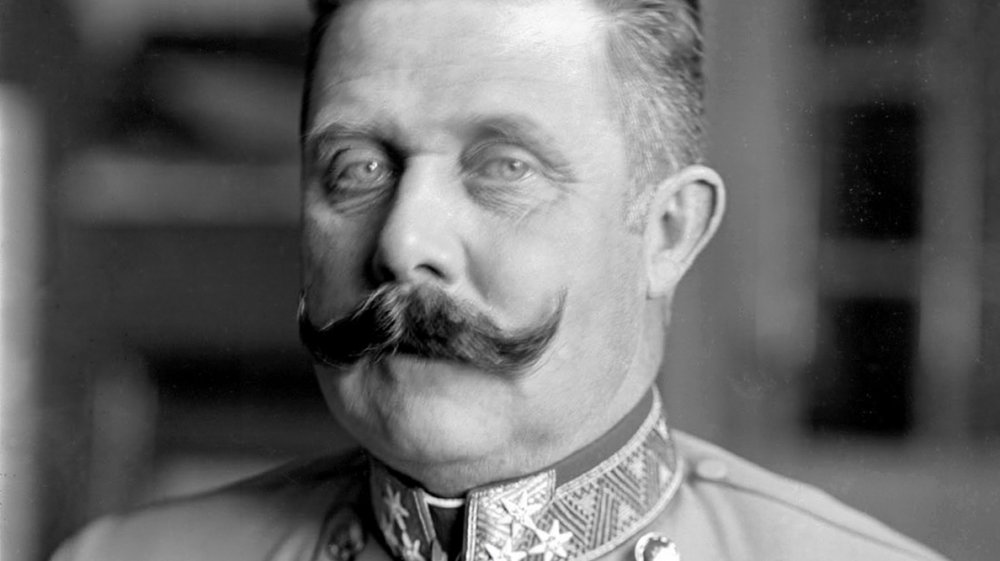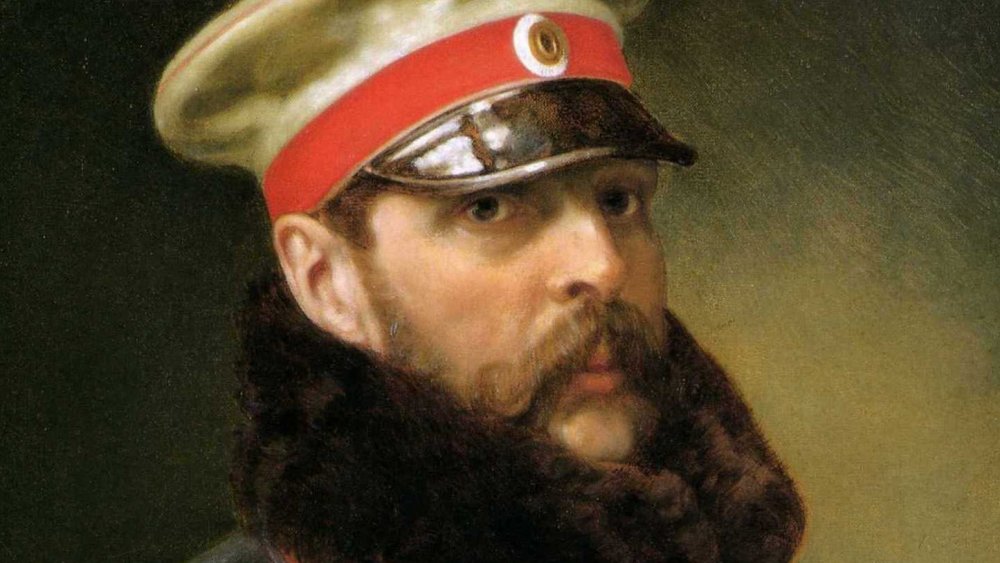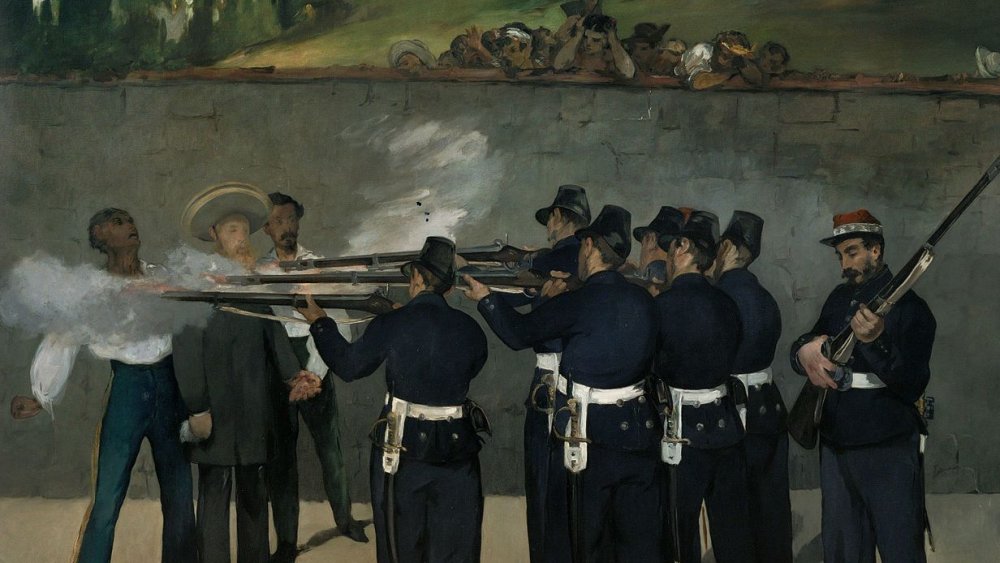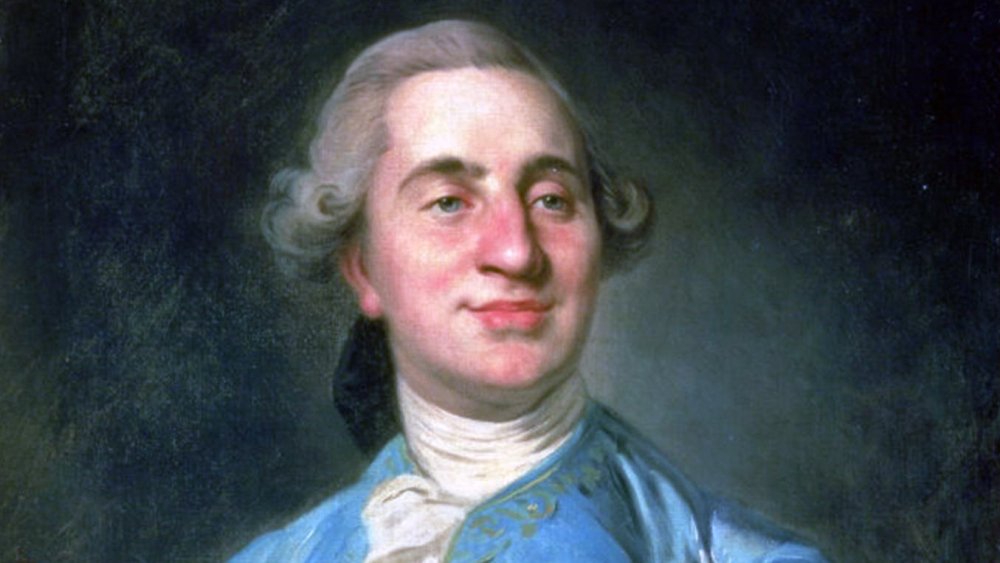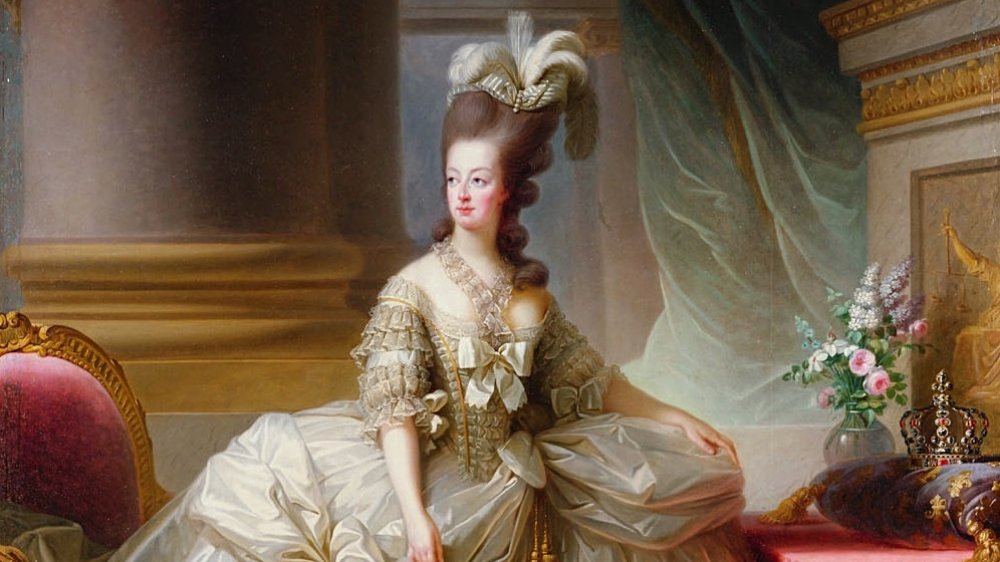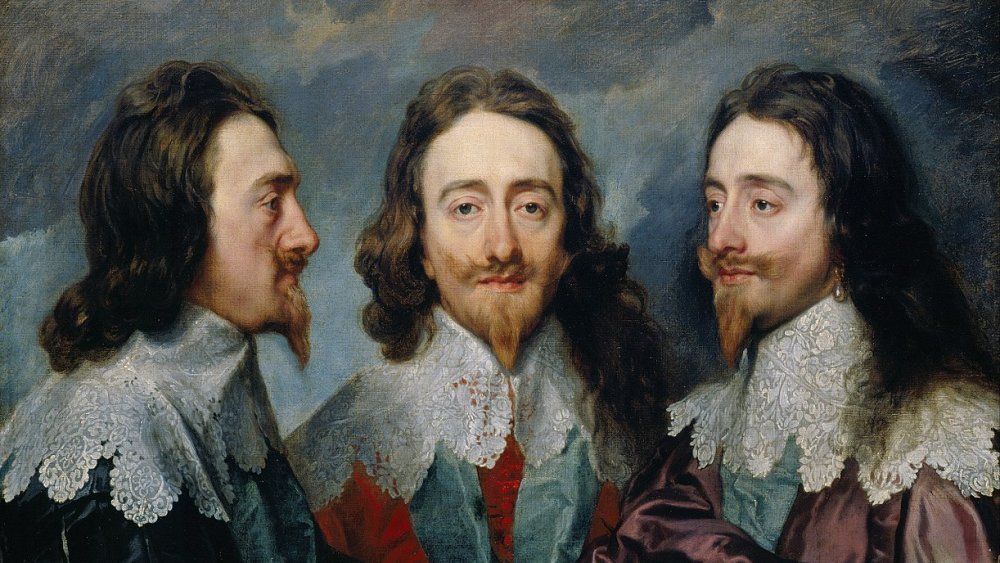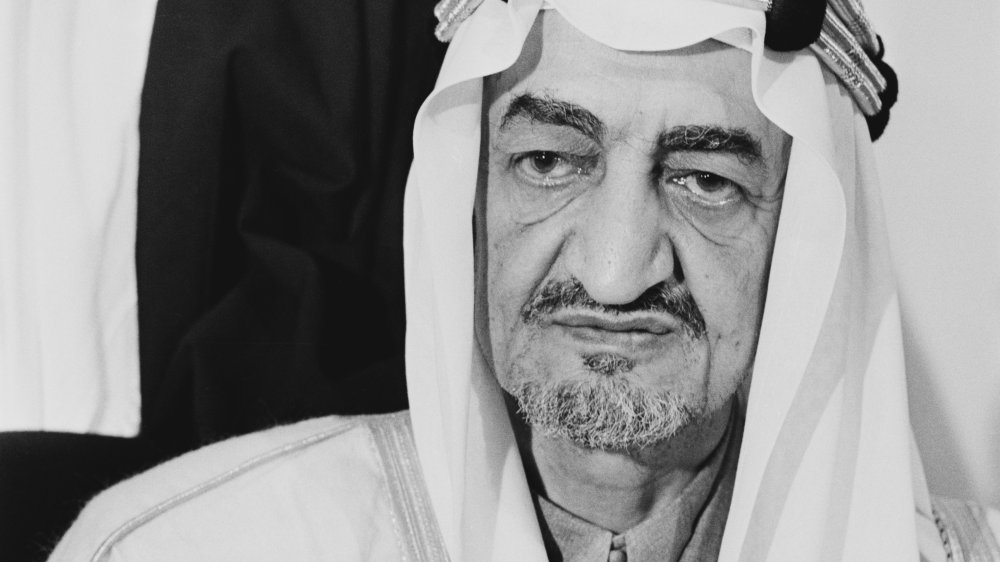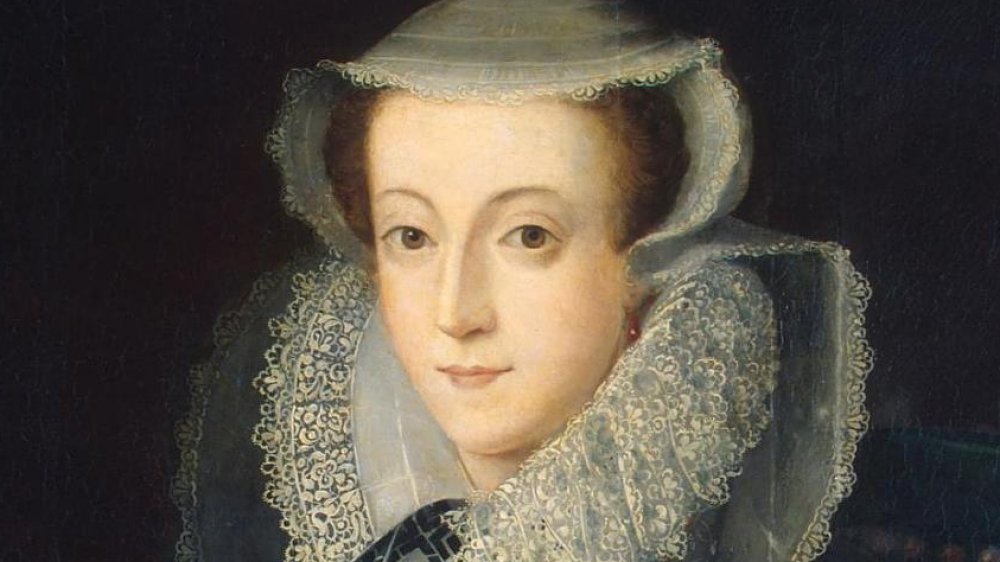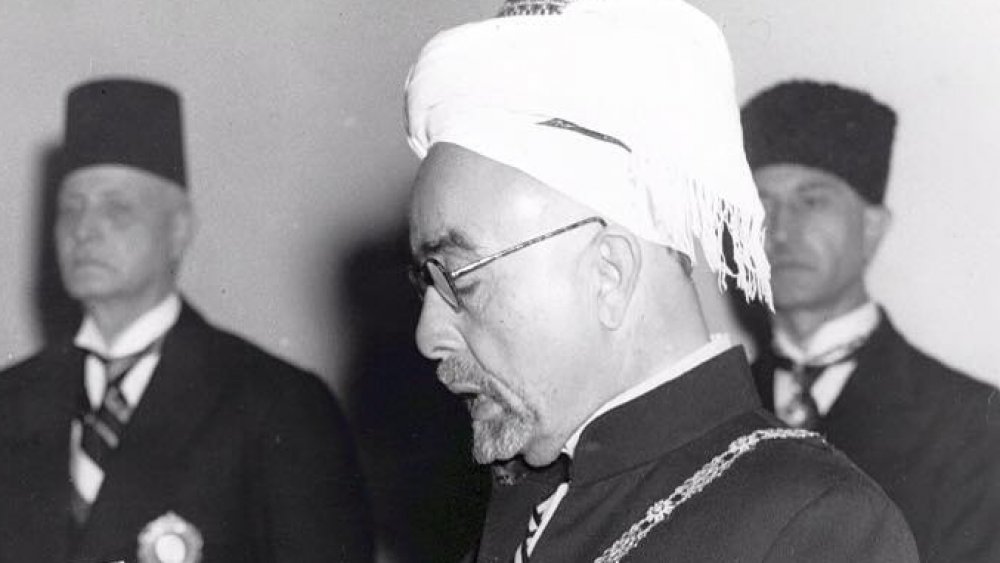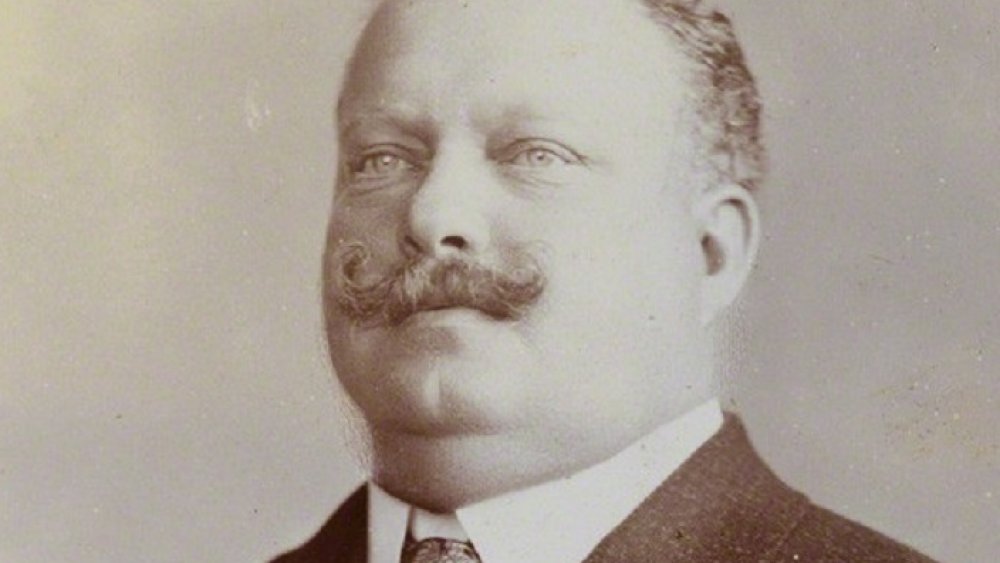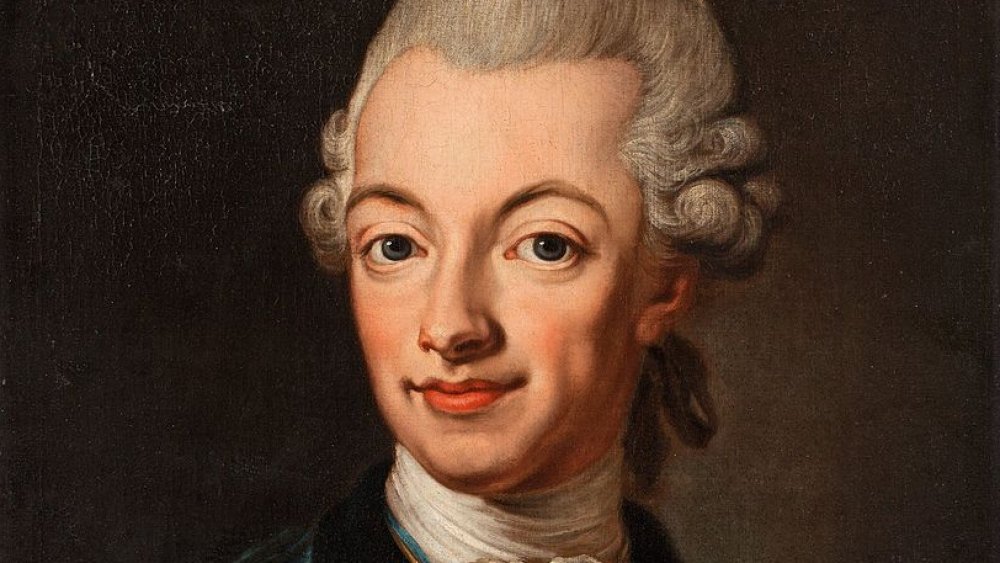Royals Who Died In Front Of Their People
Forget the deaths of former presidents, there's almost no bigger news story than the death of a royal. In the UK, there's even a secret plan in place activated by the code phrase "London Bridge is Down" that will trigger a two-week chain of events the moment Elizabeth II passes away. And everyone above a certain age remembers the gigantic period of global mourning kicked off by Princess Diana dying in 1997; a period that culminated in a funeral watched by 2.5 billion people worldwide (via History). Compared to figures like that, the most-watched Super Bowl in history — Super Bowl XLIX — is barely a rounding error.
But while ordinary royal deaths are impactful, they're even more affecting when they happen in public. For all the tragedy of Diana's death, just imagine how much worse it would've been if the crash had taken place not in Paris but in central London, and not in the dead of night, but during the morning rush hour. Royals like to see themselves as conduits to their people. This is what happens when they die in front of them.
Franz Ferdinand's assassination kills millions
In the early 20th century, one of the biggest powers was Austria-Hungary. A massive empire that sprawled across Central Europe from modern Prague down into the Balkans, it had been standing for centuries. For Archduke Franz Ferdinand, this was a blessing and a curse. A blessing because he stood to inherit the lot when his elderly uncle, Emperor Franz Josef, died. A curse, because his status as heir meant the court shunned his low-born wife Sophie. The only time the future emperor was allowed to keep his beloved at his side while on-duty was when making semi-unofficial visits, without all the usual security. Visits like the one the couple arranged to Sarajevo on June 28, 1914.
History has the details. Bosnia had just been freshly annexed by the empire, and the country's Serbs were mighty annoyed they weren't now living in Greater Serbia. So when they heard the heir of the hated empire was gonna be taking an open-top car ride through Sarajevo, some of them decided to take advantage of the opportunity.
On June 28, a gang of assassins lined the motorcade route. Although their first bomb attack failed, Franz Ferdinand incredibly didn't leave the city. Instead, he instructed his driver to visit the wounded in hospital, a route which took him right back past the remaining assassins. There, Gavrilo Princip shot both Sophie and Franz Ferdinand dead in front of their terrified subjects. The result? World War freakin' One.
Alexander II gets blown up for doing the right thing
Tsar Alexander II was also known as "Alexander the Liberator." Coming from an empire that frequently had royals with nicknames like "the Terrible," this probably gives you some clue as to what sort of dude Alexander was: a not-so-bad one. Possibly the most liberal tsar in Russian history, Alexander maintained a mostly-pacifist foreign policy, freed the serfs, and granted the Russian people their first constitution. And what did his trouble get him? One icky word: exploded.
The BBC's In Our Time has the story. On March 13, 1881, Alexander was traveling through St. Petersburg on his way to the Winter Palace, flanked by Cossack guards. That same morning, he'd just signed the law making the new constitution legal — a huge reforming step. But it wasn't reforming enough for Narodnaya Volya a terrorist group that wanted to end the entire Tsarist system. As Alexander's carriage passed the Catherine Canal, one of their members threw a bomb at it. But the bomb missed, instead wounding several of the tsar's entourage. It's at this point that Alexander made his fatal mistake.
Rather than speeding away, he got out his carriage to comfort the dying Cossacks. Unfortunately, another member of the terror cell was lurking nearby. As the public watched in horror, he hurled a bomb at the tsar's feet. The explosion did more than kill Alexander the Liberator. It's been argued that it began Russia's long march toward revolution.
Maximilian I tries to reform Mexico, gets shot for his trouble
One of the most screwy stories of 19th century politics is the story of Maximilian of Mexico. An Austrian Archduke and younger brother of Franz Josef, he seemed destined for a life of obscurity. Until, that is, the bombastic French Emperor Napoleon III made him a bizarre offer. According to Britannica, Louis-Napoleon was eager to collect a debt Mexico owed France, that the liberal Juarez government was refusing to honor. So Napoleon III cooked up a scheme with Mexico's anti-Juarez conservatives to install a random European royal as emperor of Mexico. The random royal they chose was Maximilian.
Naive as he was, Maximilian believed Mexico's people had voted for him as leader in a referendum. So in 1864, he duly went, convinced he was the rightful ruler, and not just a puppet of France. But this caused major stress-headaches for Paris almost immediately. The plan had been for Maximilian to be a good conservative Catholic, and reverse all of Juarez's reforms. Instead, Maximilian bit the hand that was feeding him by making Mexico more liberal than ever.
The result was an emperor who was unpopular with conservatives for being too liberal, unpopular with liberals for being a usurper, and unpopular with France for not following orders. In only a few short years, Maximilian was overthrown and executed in front of a small crowd of Mexicans (via Napoleon.org). He died still believing himself a champion of Mexico's poor.
Louis XVI loses his head, literally
By all accounts a sweet, shy man, Louis XVI had the bad luck to become king of France just as France was getting seriously into regicide. In July, 1789, the storming of the Bastille marked the first tremors of the almighty coming earthquake known as the French Revolution. While the revolutionaries would initially consider keeping Louis as a figurehead, Louis shot himself in the foot by trying to escape. Not long after, in the summer of 1792, an insurrection in Paris sent the revolution spiraling in a bloodier direction. With radical leaders like Maximilian Robespierre in the ascendancy, there was now only one way Louis's story could end.
As History details, Louis had been hoping Austria would come to his rescue. When the National Convention found out, they put the king on trial for treason. In January 1793, he was convicted and sentenced to death by decapitation.
The Napoleonic Guide details Louis' last moments. On January 21, the king was led to the Place de la Révolution. So many of his subjects had turned out to watch that it took two hours to pass through the crowds. As he mounted the scaffold, Louis's final act was to declare his innocence and pardon his executioners. Then it was a quick swish of the blade, then thunk of the guillotine, and the king of France was no more. He wouldn't be the last to die at the hands of madame guillotine.
Marie Antoinette's execution is even grimmer than her husband's
The popular view of French history is that Marie Antoinette and Louis XVI's deaths were as intertwined at their lives. So it can be a surprise to learn the queen lived nine months longer than her husband. But if this seems like a kind of consolation prize, think again. After the mob executed Louis, they didn't leave Marie Antoinette enjoying a last taste of luxury before removing her head. Nope, they made her suffer in squalor and go through trauma before finally putting her out her misery.
History Extra has the full, miserable story. Six months after Louis's execution, the queen had her 8-year-old son, Louis XVII, taken from her and put in the care of a cobbler (via Biography). The following months, things got even worse. Marie Antoinette was thrown into a dungeon that stank of rat urine, kept under round the clock surveillance by male guards, and given a strict diet of only bread and water. The cell was so damp that slime coated its walls. Unbelievably, the worst was still to come.
At the queen's trial that October, her son was forced to accuse her of sexually abusing him — a charge so flagrantly made up that even some revolutionaries were ashamed. However, they weren't ashamed enough to keep her alive. Marie Antoinette was executed before a Parisian mob on October 16. At long last, her nightmare was over.
Charles I kinda deserves everything that happens
Of all the royals to have been executed, perhaps none deserved it as much as Charles I of England. As king, he fought with Parliament, refused to accept limitations on his power, dragged his nation into stupid wars, ruled by personal fiat, levied ridiculous taxes, and generally acted like he was trying to win the Oscar for Biggest Butthead in British History (via Parliament). When Parliament finally defeated him in war, Charles rebuffed Oliver Cromwell's deal and instead secretly enticed the Scottish to invade and trigger the Second English Civil War (via British Civil Wars Project). Wow. No wonder Parliament gave up and chopped off his head.
Banqueting House details the last days of Charles's life. After Parliament passed sentence, they gave the king three days to put his affairs in order. Charles spent those final days visiting his children and praying. Then, on January 30, 1649, he was summoned to the scaffold.
A large crowd had turned out to see the historic execution of a king. Unfortunately, they were made to stand so far back that Charles's final words were lost on the wind. Then the king knelt with his neck on the block and offered a last, silent prayer. When he had finished, he signaled the executioner, who chopped his head clean off. Witnesses later said that the crowd groaned rather than cheered as the king died. They'd evidently never had to deal one-on-one with this most infuriating of men.
King and Prince Faisal both wind up dying before crowds
In 1975, King Faisal of Saudi Arabia was sitting before an audience of officials when one of his nephews, Prince Faisal, asked to be let in. What happened next is complicated, but the crib notes version is that Prince Faisal pulled a gun and wound up shooting the king dead in front of a crowd of horrified onlookers (via BBC World Service). But King Faisal wasn't the only Saudi royal destined to die before his people as a result of the shooting.
As the New York Times details, the shooter, Prince Faisal, initially claimed to be insane. The reason for this is that under Islamic law, the only way for a killer to avoid the death penalty is via insanity. As a member of the royal family, the prince may well have been able to hide behind the insanity defense if he'd killed anyone else. But when you go shooting the king in front of witnesses? Well, there was only one way this was ever gonna end.
16 weeks after the assassination, the prince was taken to a square by the Central Mosque in the Saudi capital Riyadh. There, before a crowd of 10,000, he was proclaimed guilty of murder, and then beheaded with a ceremonial sword. His severed head was briefly displayed on a wooden pike, before being loaded into an ambulance along with his body and carted away (presumably, there were no attempts at resuscitation).
Mary, Queen of Scots had family trouble
On February 8, 1587, Mary, Queen of Scots achieved a really not so great first. Sat in the Great Hall of Fotheringhay Castle, she listened as an execution warrant was read out that had been signed by her cousin, Queen Elizabeth I. It was the first time in European history that the legal execution of an anointed monarch had been decreed. Before this, it had all been accidents or assassinations. But now, the continent was about to embark on a new path it could never go back from. It would just take one particularly gory execution to seal this destiny.
As the Washington Post explains, Mary was the rightful Queen of Scotland. However, she was also the great-niece of Henry VIII, the guy who'd ended England's Catholicism, and whose daughter, Elizabeth, was now Queen of England. But Elizabeth was a Protestant and Mary was a staunch Catholic. This meant some of England's Catholic subjects were working behind the scenes to get Mary on the throne.
Mary fled to England when things went bad for her in Scotland, and Elizabeth had her imprisoned for 18 years. But she finally signed Mary's death warrant when the plot for an English Catholic uprising was discovered. Mary was dragged before a crowd of around 100 of her would-be subjects and decapitated. It took multiple blows for the axeman to finish the job. Eww.
Abdullah I of Jordan catches a bullet on his way to prayer
Go back in time to the 1950s, and the Middle East would look very different. In those days, East Jerusalem wasn't part of Israel, but of Jordan. All of which is something you should bear in mind as you read about the assassination of King Abdullah I. In July of 1951, the king was in the Old City of Jerusalem to visit the Al-Aqsa Mosque, about half a mile from what was then the Israeli border. Just as he was about to step inside, a young Palestinian with a gun stepped out the shadows behind the main gate and fired it point blank. The king died instantly. A fraction of a second later, the assassin was shot dead too (via the Guardian).
As Britannica details, Abdullah was an unpopular guy with Palestinians. At the conclusion of the 1948 Arab-Israeli War, his country (then known as Transjordan) had occupied the West Bank and captured East Jerusalem. But rather than do as the other Arab leaders wanted and help create a separate Palestinian state, he instead annexed the land into his own nation, which he renamed Jordan.
From a perspective of "not getting assassinated" this was a terrible idea. The young man who gunned Abdullah down was a Palestinian nationalist enraged at the Jordanian king's actions. Not that the killing made much difference. 16 years later, Israel retook the West Bank and East Jerusalem following the Six-Day War.
Carlos I of Portugal: killed for supporting the budget Franco
Here's something you might not know: the nations of the Iberian peninsula are apparently all about dictators named Franco. The big cheese of these guys is obviously Francisco Franco, the Spanish fascist who kickstarted the nation's bloody civil war and oversaw the persecution and execution of hundreds of thousands of leftists, and nationalists from the Basque minority. But there's also his budget version, the Señor Spielbergo of local dictators. In May 1906, João Franco was appointed Prime Minister of Spain's neighbor Portugal by King Carlos I. Shortly thereafter, the king allowed garbage Franco to become dictator. Spoiler alert: this would not end well for Carlos.
Britannica has the story. Although Portugal at the time was wracked by civil unrest, the Portuguese did not take kindly to the idea that making some bozo dictator was the way out of it. Especially when King Carlos seemed content to keep living the high life. This resentment finally bubbled over on February 1, 1908. As Carlos was driving through the streets of Lisbon, an assassin shot both him and his son, Luís Filipe dead. Portuguese Franco was quickly removed from office, while Carlos's other son, Manuel, bumbled on for another two years, until he was overthrown in a revolution in 1910, ending the Portuguese monarchy (via Britannica).
Gustav III's murder is as bizarre as his life
What do you get when you mix a mysterious warning, a masked assassin at a ball, a king obsessed with banning coffee, and a bunch of over-caffeinated aristocrats? Why, that'd be the bizarre death of Gustav III of Sweden! Coronated in the late 18th Century, Gustav inherited two things from his father: a desire to rein in the nation's aristocrats, and a dislike of coffee. Weirdly, these two passions would combine to see him murdered.
According to History, Gustav's coffee obsession may have been a way of trying to curb the upper-classes' self-importance. His father, King Adolf Frederick, had banned the bean, only to watch in horror as his aristocrats kept swilling their morning Joe (or maybe "morning Johan"?). When Gustav took the throne, he was determined to stamp out coffee. At one point, he even set up an experiment in the prisons, forcing one prisoner to drink endless cups of coffee, and another endless cups of tea. Gustav hoped that the coffee drinker would die and prove his point. Instead, Gustav wound up croaking first.
In March, 1792, Gustav received a mysterious letter warning him not to attend a masked ball. The king ignored it, only to be shot dead by masked killers. The assassins all turned out to be noblemen fed up with Gustav trying to stop them doing fun stuff like drinking coffee. The message is clear: never stand in the way of anyone and their caffeine.
